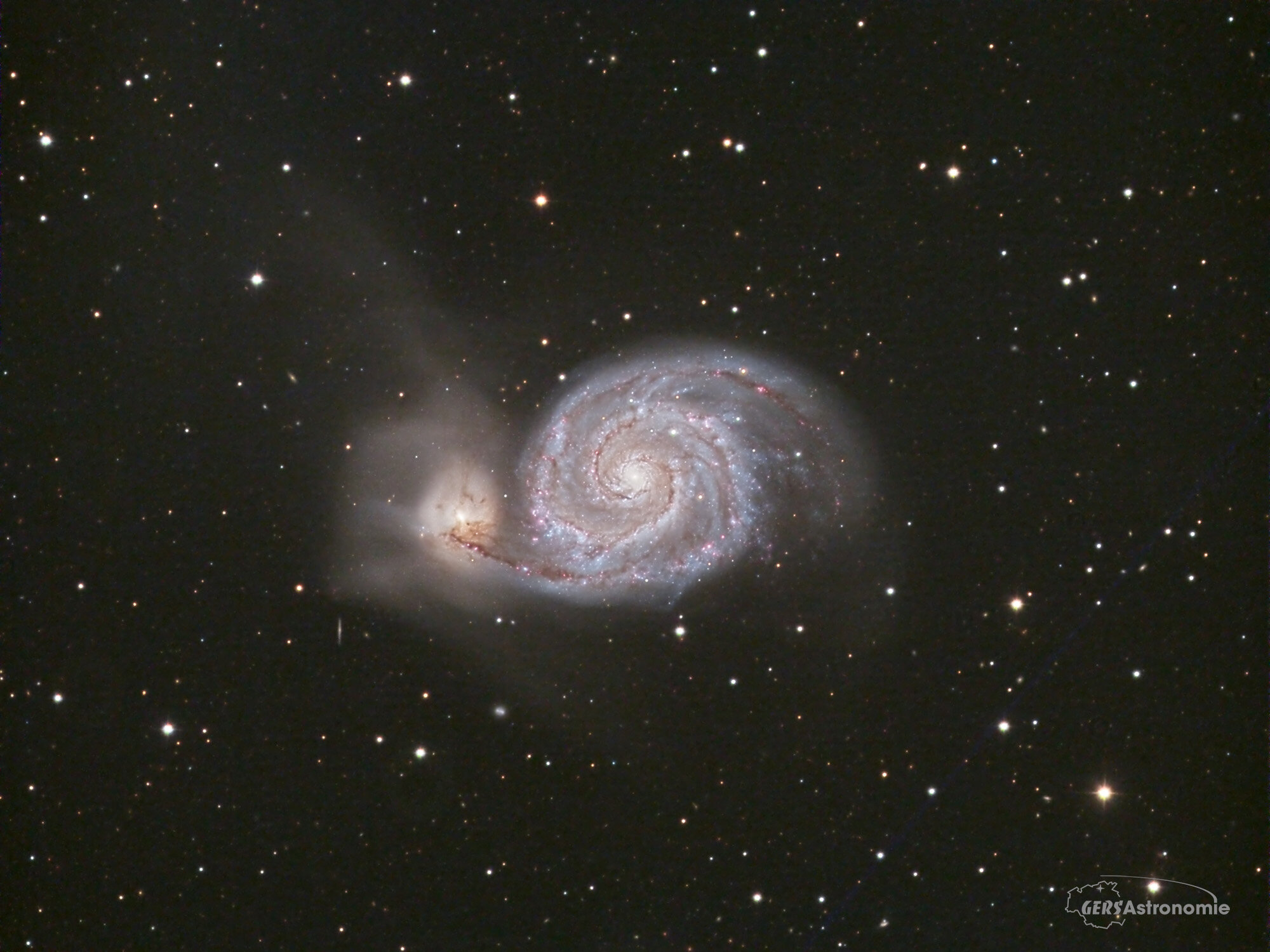M51 Whirlpool Galaxy
Messier 51 is also known as the Whirpool Galaxy. It is famous for the 1845 observations made by Lord Rosse using the huge telescope, with a mirror 6 feet across, at Birr Castle in Ireland. At the time the structure of the universe was poorly known and objects like this, which are in fact separate galaxies outside our own, were not distinguishable from the gaseous nebulae inside our galaxy. He found that M51 had a spiral structure, the first time such a thing had been observed, and it became known as a spiral nebula. It was not until 1923 that Edwin Hubble could prove that it, and others like it, were external galaxies, outside our own.
To the left of M51 (in this image) is a companion galaxy called NGC5195 and it is believed that the spiral structure of M51 has been enhanced by a gravitational interaction with it. In this theory the smaller galaxy approached M51 from behind and passed through its disk before M51's gravity pulled it back to its present position, slightly behind M51. The overall galaxy is about 35% the diameter of our own “Milky Way” galaxy and is about 23 million light-years away.
Where it is in the sky:
M51 is in the constellation Canes Venatici, but is very close to the last star of the well known asterism known as The Big Dipper or Plough, the most prominent part of the constellation Ursa Major.


